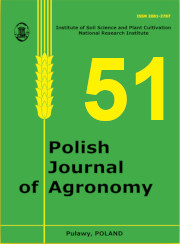Effect of DTM resolution on the determination of slope values in an upland catchment using different computational algorithms
##plugins.themes.bootstrap3.article.main##
Abstrakt
This paper presents the results of determining slope values using seven different methods for different resolutions: 1, 5, 10, 30, 90 meters for the Bystra catchment area. After calculating the slopes using different methods for different resolutions, the following slope ranges were created: 0.00o–2.99o, 3.00o–5.99o, 6.00o–9.99o, 10.00o–14.99o and ≥15o into which the corresponding pixels were included. The results of slope calculations were compared with geodetic field measurements of slopes in the vicinity of Esterka castle in Bochotnica, which is located in the Bystra catchment area. It was found that the good reproduction of the actual terrain relief, represented by the 1 m resolution Digital Terrain Model (DTM), deteriorates significantly starting from 30 m resolution. The method for determining terrain slopes that most accurately represents the true relief variability is the 2nd Degree Polynomial Adjustment method (Zevenbergen et al., 1987). The results of the analyses are crucial for determining the minimum quality of DTM data.
In this study, high resolution data (1 m, 5 m, 10 m) were found to be suitable for analysis and interpretation of terrain slopes in a small catchment. The results of the study show what resolution of DTM should be used for other studies: morphometric, geomorphological or hydrological of small catchments, where the quality of results is important e.g. in accurate water balance analysis of catchments or soil erosion analysis in agriculture.
##plugins.themes.bootstrap3.article.details##

Utwór dostępny jest na licencji Creative Commons Uznanie autorstwa – Na tych samych warunkach 4.0 Miedzynarodowe.
Autor udziela redakcji czasopisma Polish Journal of Agronomy (w skrócie: PJA) licencji niewyłącznej i nieodpłatnej na korzystanie z autorskich praw majątkowych do wersji papierowej/drukowanej i elektronicznej utworu Autora opublikowanego w PJA w kraju i za granicą, w całości lub w dowolnej części, w tym umieszczanie utworu w elektronicznych bazach/zbiorach danych lokalnych lub dostępnych w Internecie, przez czas nieograniczony na polach eksploatacji określonych w art. 50 ustawy o prawie autorskim i prawach pokrewnych.
Prace wydane w Polish Journal of Agronomy są udostępniane na licencji Creative Commons Uznanie autorstwa-Na tych samych warunkach 4.0 (CC-BY-SA).

